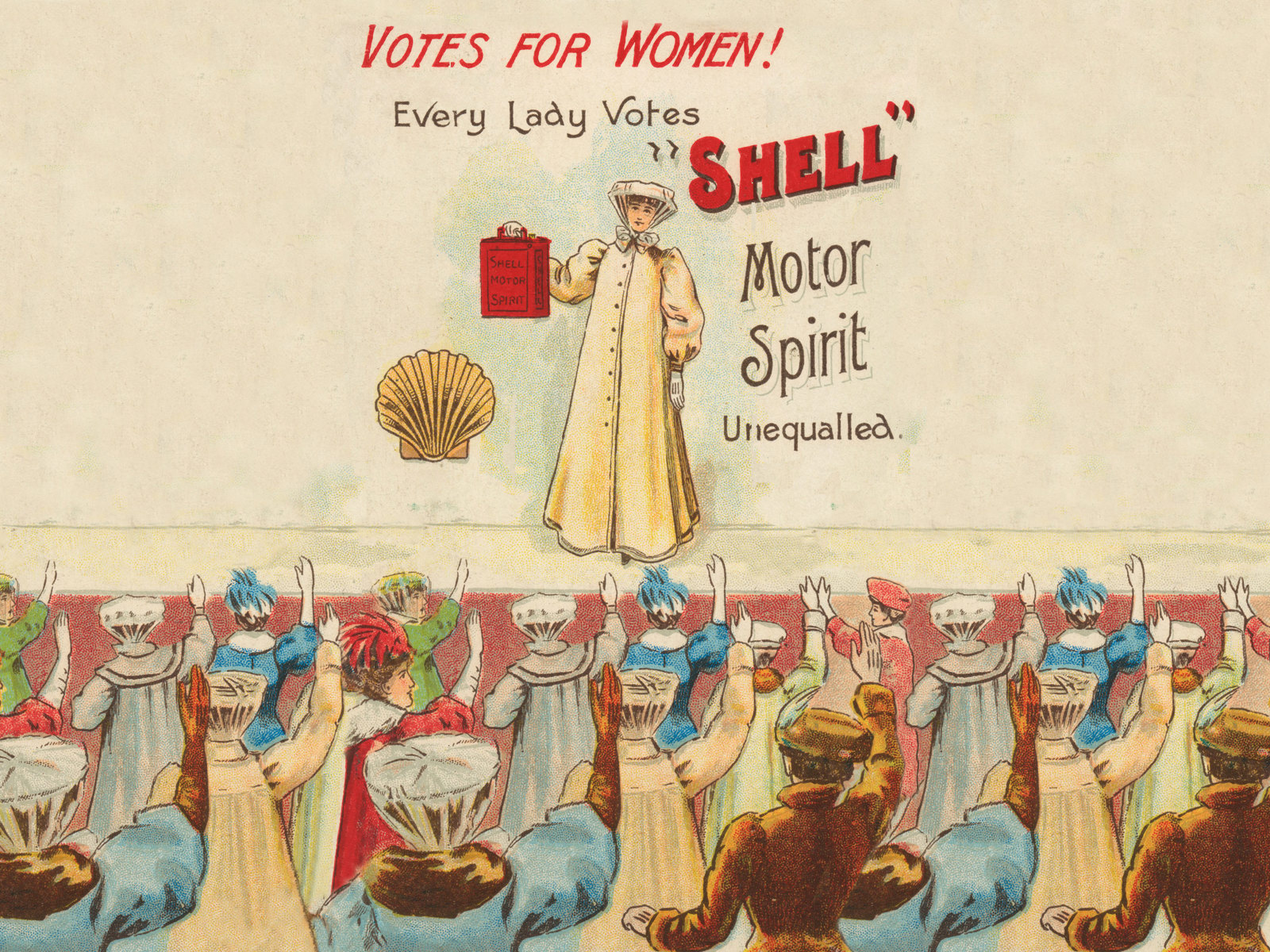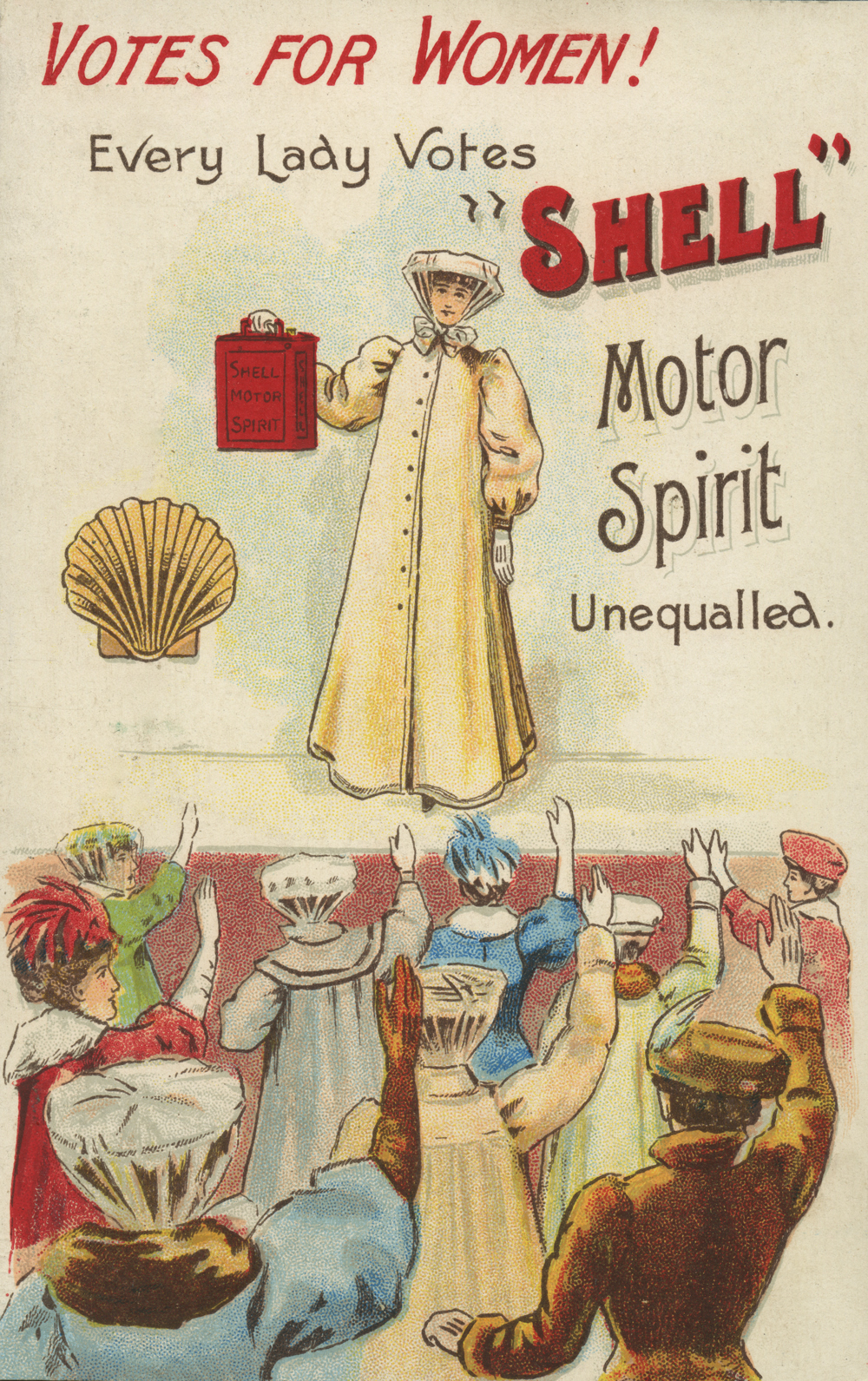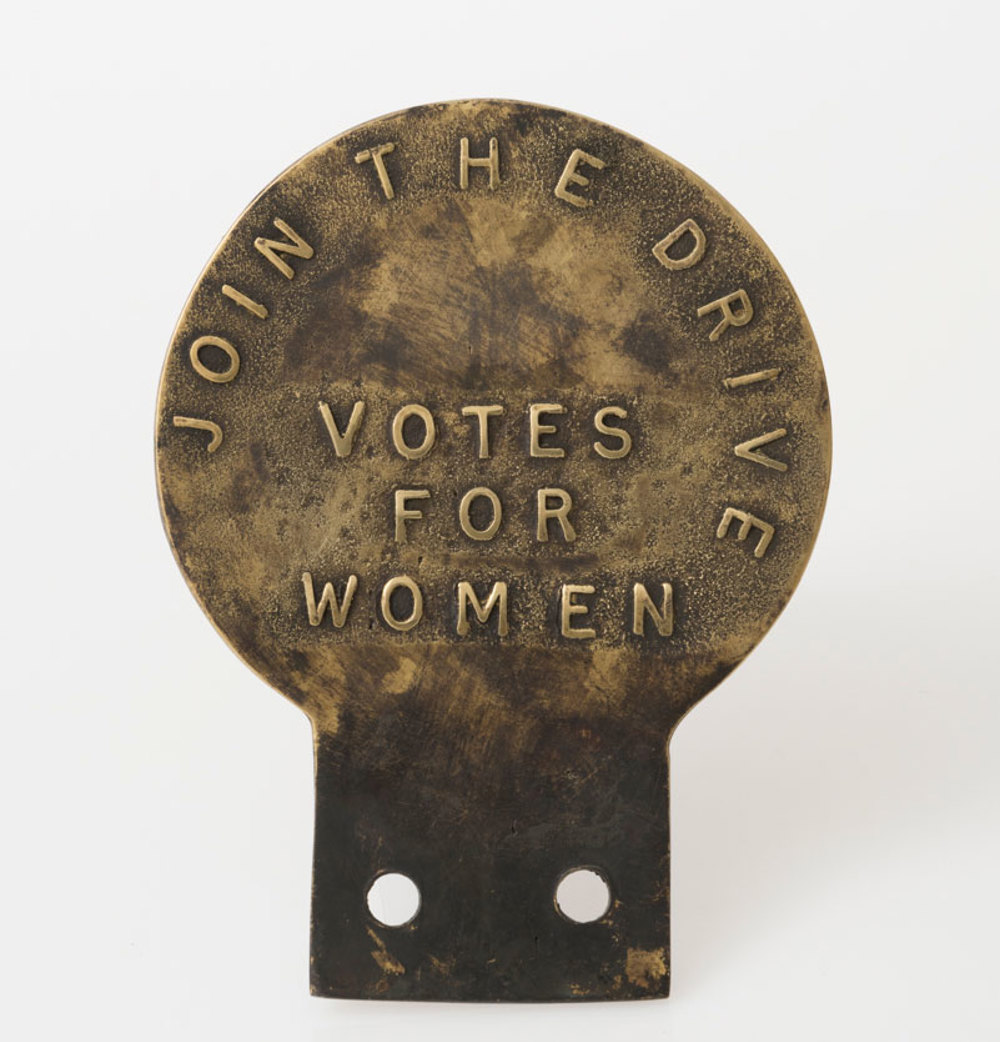
Publicity
Discover how the role of publicity helped raise awareness of women’s suffrage.
Shell was one company of many within the car industry who saw the suffrage movement as an opportunity to advertise their products to a wider audience.
The way in which Shell demonstrated this was through the use of company postcards produced in the early twentieth century. Postcards were one of the earliest forms of advertising used by Shell and, arguably, openly supported women’s rights through their illustrations, evident in their 1908 ‘Votes for Women’ postcard.
With postcards, such as this one, being frequently delivered to people, with up to seven postal deliveries a day, awareness of the suffrage movement undeniably increased through advertisement, generating support.
In addition to raising awareness for the Suffrage campaign, Shell’s use of women in their advertisements demonstrates a desire to challenge traditional gender stereotypes.
In the early twentieth century, there were several general activities typically seen as only being appropriate for male participants – this included driving. The use of women in Shell’s advertisements for a male dominated industry illustrates the support they gave to women’s rights.

Sources:
Miller, L., ‘The Suffragist Pilgrimage: Their March, Our Rights’, Wiltshire and Swindon History Centre [accessed 25/04/2018]
‘Shell Heritage Art Collection’, The National Motor Museum Trust (Beaulieu, Hampshire).
General publicity of the Suffrage movement featured beyond the advertisement of large companies within the motor industry. Evidence reveals that women advertised their campaign simply by using their motorcars and caravans.
The suffrage colours were often applied to Suffragist and Suffragette vehicles, along with banners reading pro-women’s suffrage slogans, such as “law-abiding suffragists”. In addition to this, the production of car badges, that would be attached to the front and back of motor cars, promoted the women’s suffrage movement on the road.
One car badge, believed to date back to 1910, is held at the National Motor Museum, Beaulieu, featuring the words, “Join the Drive” and “Votes for Women”.
By customizing their vehicles to show support for the Suffrage movement, women were able to spread awareness of the campaign in a quicker, more efficient way, nationally.
The use of the motor car as a tool for advertising the campaign is particularly significant as it not only demonstrates women’s dedication to the cause, but it also highlights in two separate ways how women were attempting to challenge contemporary views of masculinity both politically and socially.

Sources:
National Motor Museum Archives The National Motor Museum Trust (Beaulieu, Hampshire).
Miller, L., ‘The Suffragist Pilgrimage: Their March, Our Rights’, Wiltshire and Swindon History Centre [accessed 25/04/2018]

Subscribe for updates
Get our latest news and events straight to your inbox.